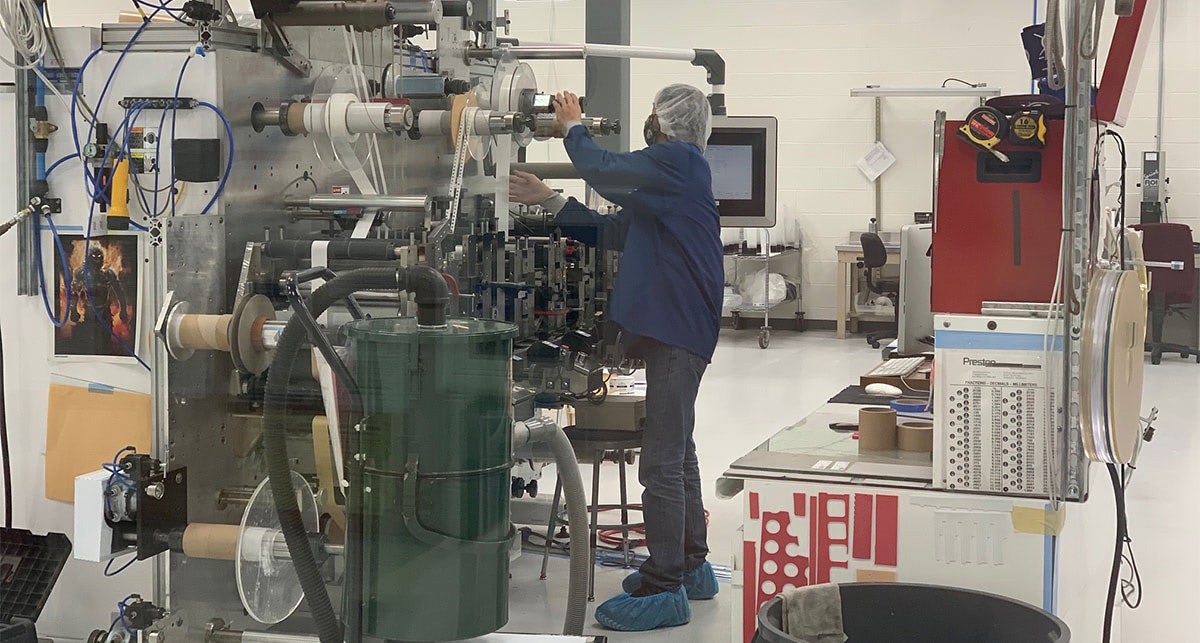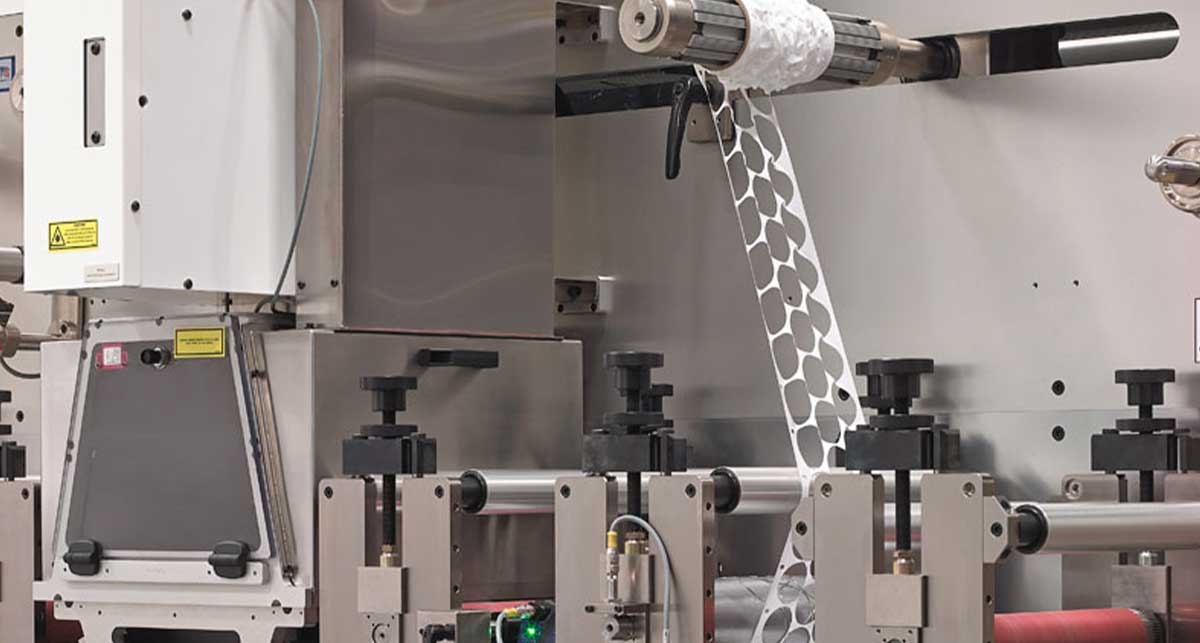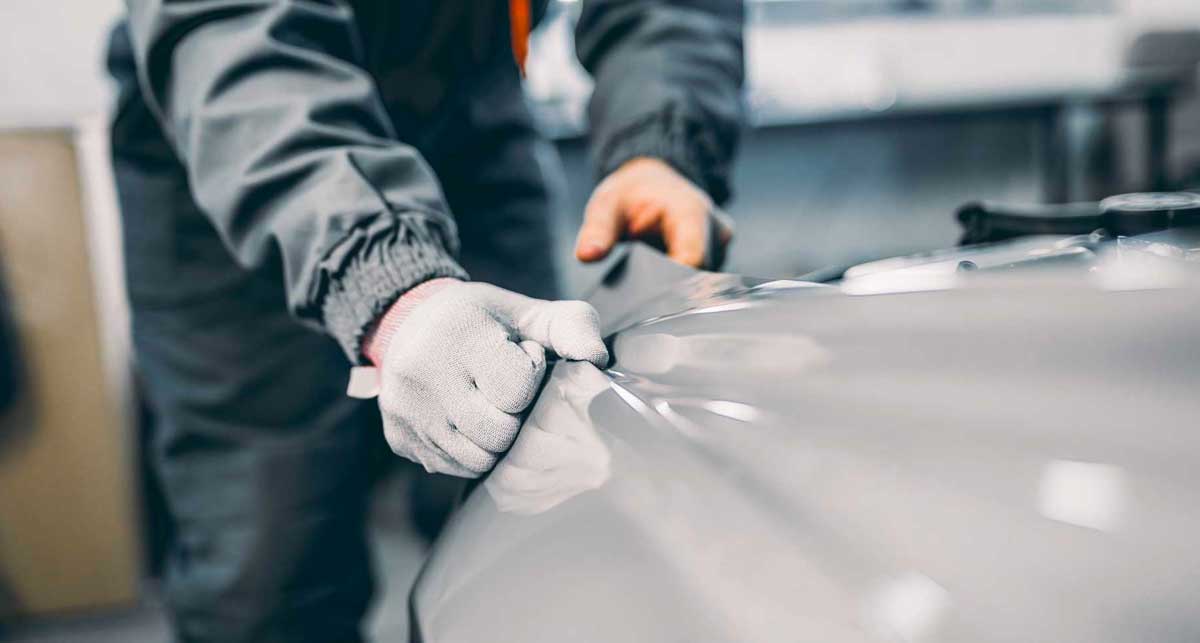Common Laser Cutting Quality Concerns
Which is more likely to create debris: cutting tape with a pair of scissors or blasting it with a CO2 laser? If you said hitting it with the laser, ding ding ding! You are correct.
1. ROUGH EDGES
A CO2 laser cuts material using energy pulses, creating a much rougher edge than a blade (as seen on a microscope). The laser brushes the edges, creating a “heat-affected zone” where the laser impacts and melts the material.
This is a common laser cutting phenomenon that may be difficult to spot with the naked eye. However, depending on your application, this could be a crucial concern for your project. Below is an example of an laser cut acrylic part under magnification.
As you can see, when you start to look under the microscope, there are little hills and valleys that go along the edge.
2. MELTED LAYERS
A laser can melt layers and edges together, making it challenging to separate them. This could affect the functionality of your adhesive parts. For example, a melted liner might cling to an adhesive component, making it impossible to peel off as intended.
Above, you can see that the adhesive material has melted into the liner, making it difficult to remove.
3. START AND STOP MARKS
When the laser hits a material, it can sometimes create an abnormal burn, gap, or hole in the part where it began ablating.
4. SCORCH MARKS
Scorch, char, or burn marks will harm the part’s aesthetic qualities and potentially affect its functionality in the case of optically clear adhesives.
How Do Laser and Die Cutting Differ?
- Die cutting requires the purchase of a steel tool
- Laser cutting is more accurate and can produce tighter tolerances
- Die cutting is faster and more efficient at higher quantities
- Laser cutting may produce jagged, melted, or burned edges
Laser cutting uses a beam to slice through material, while die cutting requires a steel tool to punch out shapes.
Laser cutting is a more accurate technique than die cutting, and can achieve more precise, tighter tolerances. It also does not require the purchase of additional tooling, such as a die cut tool. However, it is far slower than die cutting, making it cost-inefficient for higher qualities, and may also ablate the material, causing burnt or ragged edges that can lead to aesthetic concerns.
Setting Your Laser Cutting Expectations
Laser cutting is known for having messier edges than rotary or flat bed die cutting, but the range of what’s considered acceptable will vary by project.
Certain materials are more challenging to laser cut while retaining high quality or aesthetics, such as polyimide, which often leaves brown soot marks and cuts “dirtier” by laser.
If you’re searching for clean, aesthetically pleasing parts, laser cutting may not be your best option. However, if you’ve measured your expectations around the possibility of charred edges and other quality concerns resulting from the laser cutting process, then you’re ready to dive in.
Testing prototypes is a crucial step in your product development process. Using our CO2 laser, Strouse’s engineers will cut a rapid prototype out of your material and send it over ASAP.
If you’re ready to try different combinations of designs and materials and see how your part performs, request a sample today.
To read more about the laser cutting process, consider checking out our Capabilities page. Lastly, here are a couple of additional resources that you may find helpful:







